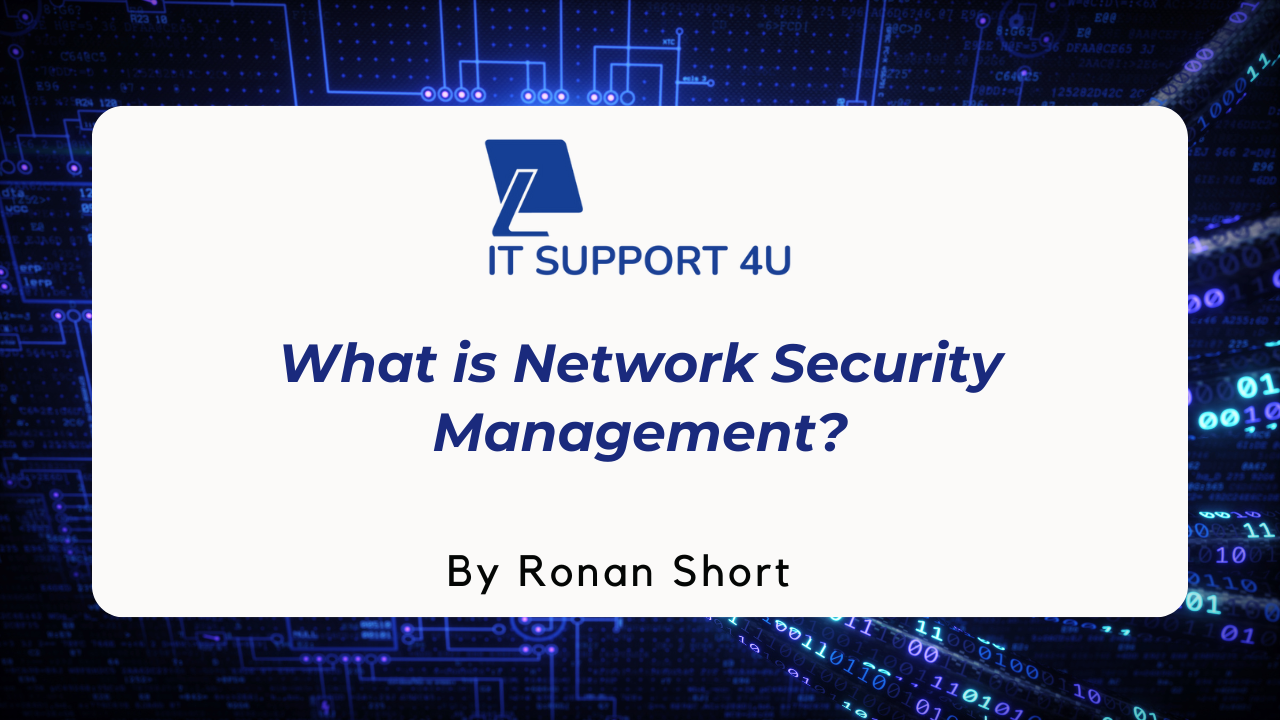Nowadays, network security is more important than ever. As businesses grow and rely more on online systems and connected devices, managing protection across a wide range of locations and tools becomes increasingly complex.
So, the most common question asked is 'What Is Network Security Management'? In a short term, it is actually a practical way for IT teams to keep everything secure by controlling and monitoring activity from one central place.
From spotting possible threats to keeping software up to date, this approach makes managing security easier and more efficient. In the sections below, you'll find clear insights into how network security management works, the problems it helps solve, and the key benefits it brings to modern businesses.
Let’s explore the essentials and see how this approach can support safer, smarter networks.
What is Network Security Management?
Network security management allows administrators to centrally control and monitor networks that include both physical and virtual firewalls. These solutions help administrators gain deep visibility into network activity, automate device configurations, enforce global security policies, analyse firewall traffic, generate detailed reports, and manage all systems through a single, unified interface.
What Challenges Does Network Security Management Address?

In today’s complex digital landscape, keeping a network secure is an ongoing challenge for IT teams. As networks grow and evolve, maintaining consistent protection, compliance, and performance becomes increasingly demanding.
The sections below explain the main problems organisations face and how effective network security management helps overcome them.
1. Growing Complexity & Misconfiguration
Modern networks consist of countless devices, users, and applications spread across multiple locations. Managing access controls, compliance requirements, and performance optimisation can easily become overwhelming. Even a small configuration mistake can expose the network to serious risks or result in compliance issues.
2. Outdated or Conflicting Rules
Over time, networks accumulate large numbers of firewall policies that may be outdated, duplicated, or conflicting. These inconsistencies can slow performance, create vulnerabilities, and make it difficult for IT teams to maintain a clear security structure. Regular review and simplification of these rules are essential for reliable protection.
3. Centralised Management
Network security management allows administrators to manage security policies and workflows from one central interface. This approach reduces manual effort and minimises the chance of human error, helping teams maintain consistent protection and faster response times.
4. Smarter Security Decisions
By gathering information about threats and network vulnerabilities, security management tools help IT staff understand the most effective ways to prevent attacks. This insight supports better decisions, reduces network risk, and ensures sensitive data remains protected.
5. Better Policy & Compliance Control
A Single interface for policy management helps IT teams manage changes efficiently and stay compliant with regulations. Automated workflows and integrated compliance checks simplify routine tasks, reduce the likelihood of mistakes, and allow staff to focus on strategic improvements to network security.
How Does Network Security Management Work?

Network security management combines multiple security tools within one central system, allowing IT teams to manage the entire network from a single location.
In traditional or older networks, firewalls and access control systems often operate independently, making monitoring and updates more time-consuming. With network security management, these tools are brought together in a unified platform, giving administrators full visibility across all devices and making it easier to apply updates and maintain consistent security.
The specific setup of network security management can differ between organisations, depending on their infrastructure, policies, and security requirements.
Key Components of Effective Network Security Management
An effective network security management system combines several core elements that work together to keep your organisation’s network secure and efficient. Below are the main components that form a strong and reliable security framework.
1. Centralised Administration
Allows IT teams to manage all security tools and policies from one location for better visibility and control.
2. Network-Wide Detection
Identifies threats and unusual activities across the entire network to prevent potential breaches.
3. Firewall Management
Simplifies the setup, monitoring, and maintenance of firewalls to ensure consistent protection.
4. SDP Tools Protection
Strengthens security for software-defined perimeters by controlling access to applications and data.
5. Automation Tools
Reduces repetitive tasks and human error by automating key security and administrative processes.
6. Policy Distribution Systems
Ensures that security policies are applied consistently across all devices and network segments.
7. User Access Control
Regulates who can access specific systems, helping to protect sensitive information from unauthorised use.
8. Activity Monitoring
Tracks and analyses user behaviour and network traffic to detect suspicious activity in real time.
9. Reporting Functions
Provides clear, detailed reports that help administrators review performance, compliance, and potential risks.
What are 5 Key Benefits of Network Security Management?
Upgrading to a modern network security management system offers several important advantages for protecting data and improving performance across your organisation.
1. Stronger Endpoint Protection

Ensures every device is protected with updated firewalls, antivirus software, and monitoring tools to detect and stop threats early.
2. Lower Costs and Better Efficiency
Automation reduces manual work and downtime, saving both time and operational expenses across the business.
3. Improved Compliance and Reporting
Helps meet cybersecurity and industry regulations while providing clear reports to prove compliance and spot risks quickly.
4. Centralised Threat Detection and Fast Response
Gives IT teams full visibility of network activity, allowing them to identify and neutralise potential attacks in real time.
5. Secure Cloud and Remote Access
Protects cloud-based systems and remote connections using strong access controls and Zero Trust security principles.
What Is IT Support Networking Implementation?
ITSupport Networking Implementation provides a reliable and flexible approach to managing network security. It offers centralised visibility, simplified policy management, and user-friendly controls for maintaining a secure and well-organised network.
The system supports essential features such as firewall protection, threat detection, and secure connectivity, all managed through an intuitive interface that helps teams maintain efficiency and consistency across their network.
Conclusion!
Network security management plays a vital role in protecting modern businesses from growing digital threats. From centralised control and threat detection to policy enforcement and cloud security, it ensures your network remains secure, efficient, and compliant. As networks become more complex, having the right tools and guidance is key to staying ahead.
If you’re looking to strengthen your network security or need help understanding how it all works, ITSupport4u is here to assist. Our team can help you take the right steps towards a safer, smarter setup. Get in touch with ITSupport4u and secure your network with confidence.
Get an IT Plan Today!












